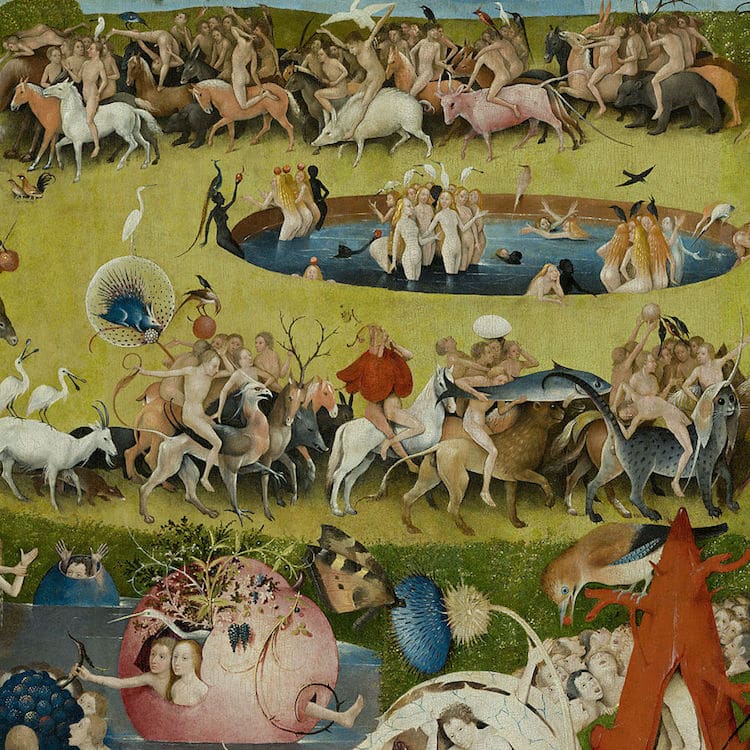
15 Facts About 'The Garden of Earthly Delights' by Hieronymus Bosch
The Meaning of Hieronymus Bosch's. The Garden of Earthly Delights. Explained. Over the half-millennium since Hieronymus Bosch painted it, The Garden of Earthly Delights has produced an ever-widening array of interpretations. Is it "a painting about sexual freedom"?

9thegardenofearthlydelightshieronymusbosch Dasartes
The Garden of Earthly Delights is a triptych painted by the master Hieronymus Bosch (c.1450-1516) — an Early Netherlandish painter. It has been housed in Madrid's Museo Del Prado since 1939. Dating between 1490 and 1510, when Bosch was about 40 (or 50) years old, it is one of his best known and most ambitious works.

Pin by Virginia Hoskins on 201201 Hieronymus bosch paintings, Garden of earthly delights
The Garden of Earthly Delights Hieronymus Bosch Original Title: Tríptico del Jardín de las delicias Date: 1510 - 1515 Style: Northern Renaissance Series: The Garden of Earthly Delights Genre: religious painting Media: oil, panel Location: Museo del Prado, Madrid, Spain Dimensions: 220 x 389 cm Order Oil Painting reproduction
Garden of Earthly Delights by Hieronymus Bosch (Looking to start up a conversation on this
Confiscation ( City of Brussels, Fernando Álvarez de Toledo, 3rd Duke of Alba, 1568) Width. 384.9 cm. Height. 205.5 cm. Religion or worldview. Christianity. Different from. The Garden of Earthly Delights.

The Garden of Earthly Delights Hieronymus bosch, Hieronymus bosch paintings, Renaissance paintings
Oct 18, 2019 11:23AM Hieronymus Bosch The Garden of Earthly Delights, 1490-1500 Museo del Prado, Madrid Few artworks sum up the wild ecstasy and weirdness of lust better than Hieronymus Bosch 's famed triptych Garden of Earthly Delights (1490-1500). The dominant subject of the painting is fleshy pleasure.

» Spotlight — Hieronymus Bosch, The Garden of Earthly Delights
This is the Garden of Earthly Delights, a fantasy riot of bizarre imagery, of giant animals, monsters cobbled together out of bits and pieces of other creatures, of all sorts of sexual escapades and gluttonies. What was Bosch saying about these pleasures? How are we to interpret the triptych, as a whole?
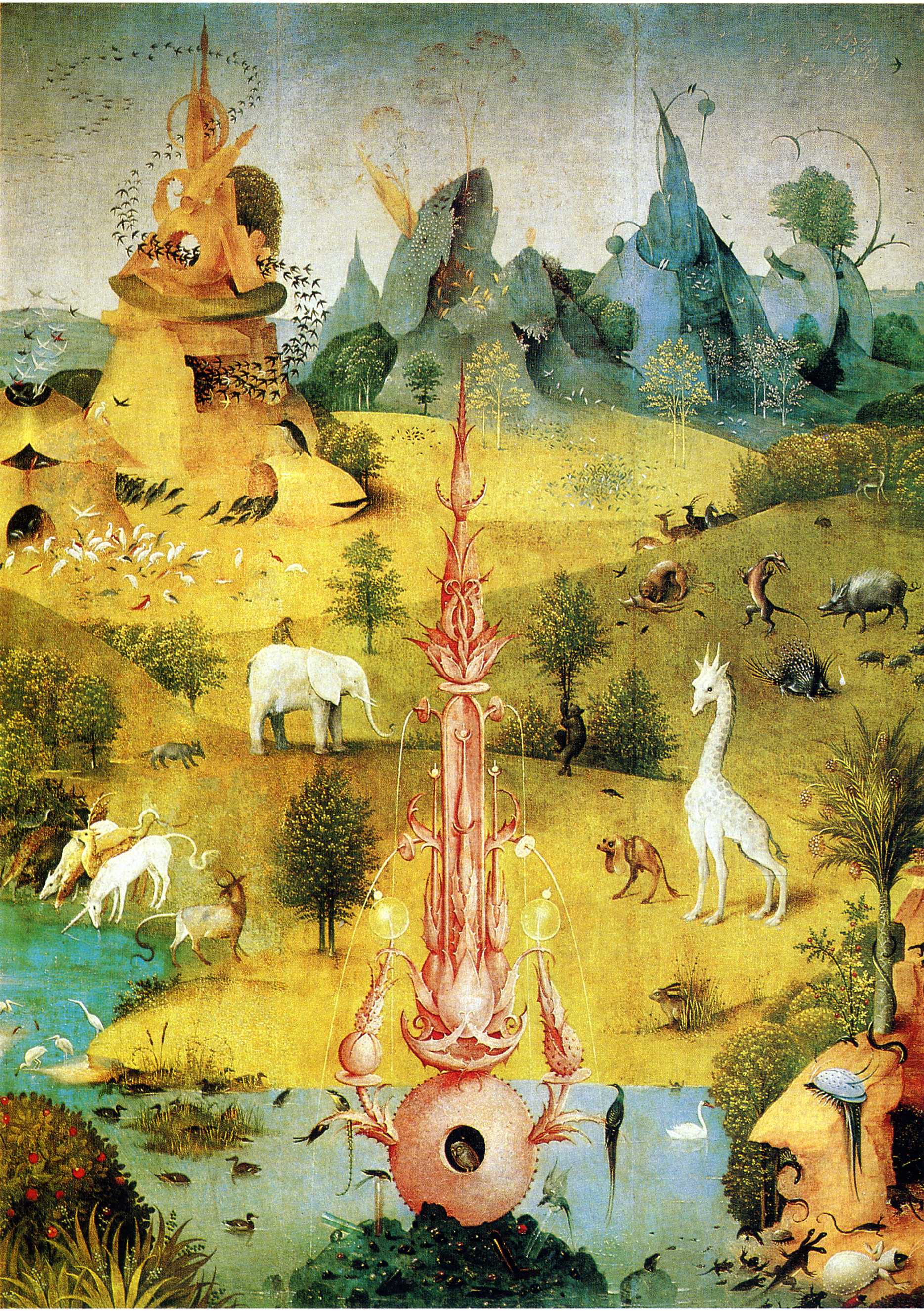
The Garden of Earthly Delights (detail), 1490 1500 Hieronymus Bosch
To write about Hieronymus Bosch's triptych, known to the modern age as The Garden of Earthly Delights, is to attempt to describe the indescribable and to decipher the indecipherable—an exercise in madness. Nonetheless, there are a few points that can be made with certainty before it all unravels.

Bosch’s Garden Of Earthly Delights 10 Facts You Need To Know
The Garden of Earthly Delights is Bosch's most complex and enigmatic creation. For Falkenburg the overall theme of The Garden of Earthly Delights is the fate of humanity, as in The Haywain (P02052), although Bosch visualizes this concept very differently and in a much more explicit manner in the centre panel of that triptych than in The Garden of Earthly Delights.

Hieronymus Bosch’s “Garden of Earthly Delights,” Explained Artsy
What concerned Bosch, in his triptych of creation, human futility and damnation (the Garden of Earthly Delights is a modern misnomer for the work), was the essentially comic ephemerality of human life. Allow me to explain. The Outer Panels
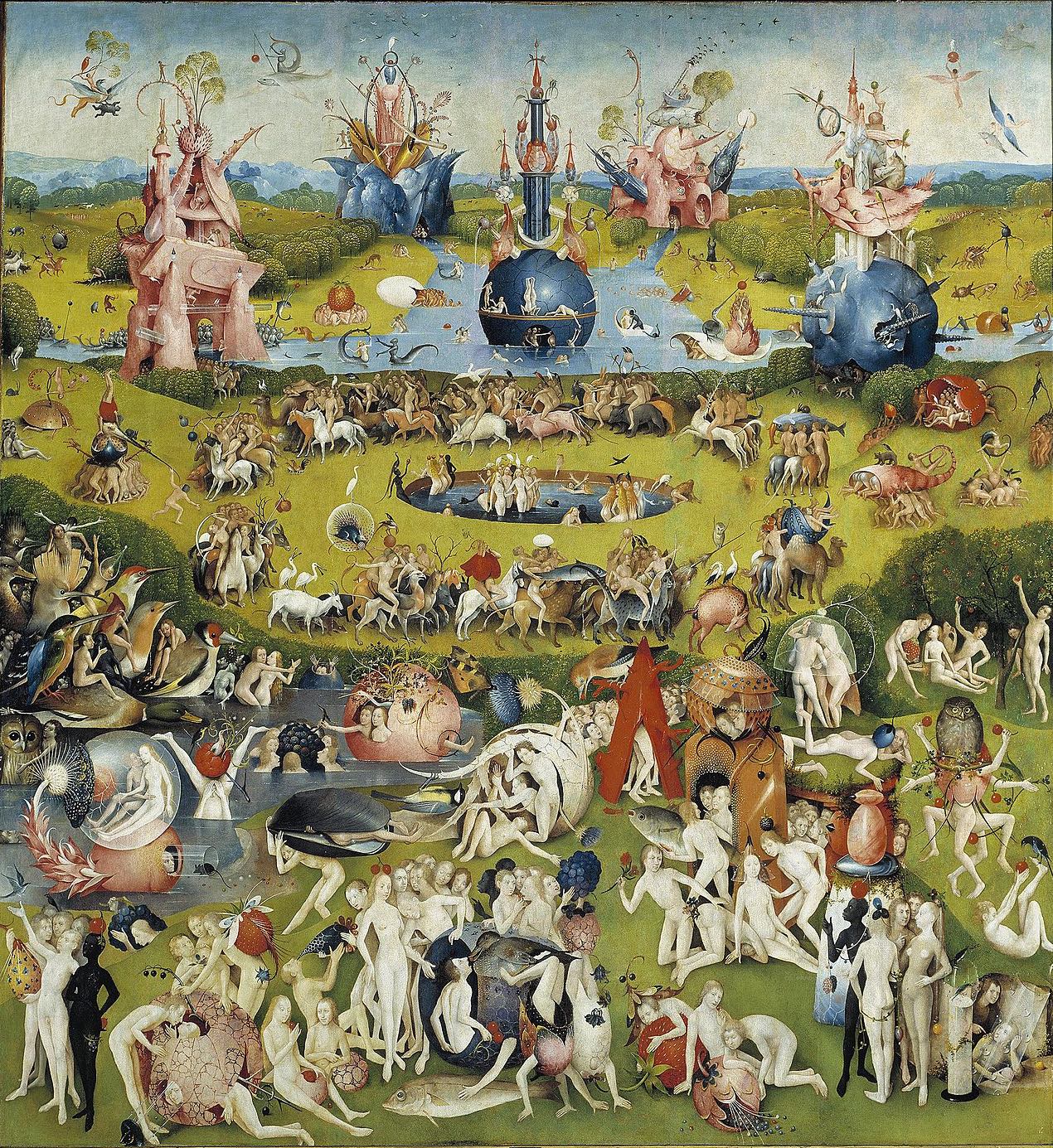
» Spotlight — Hieronymus Bosch, The Garden of Earthly Delights
A documentary on Hieronymus Bosch's famous triptych "The Garden of Earthly Delights", housed in the "Museo del Prado", Madrid.Written Presentation, Video Edi.
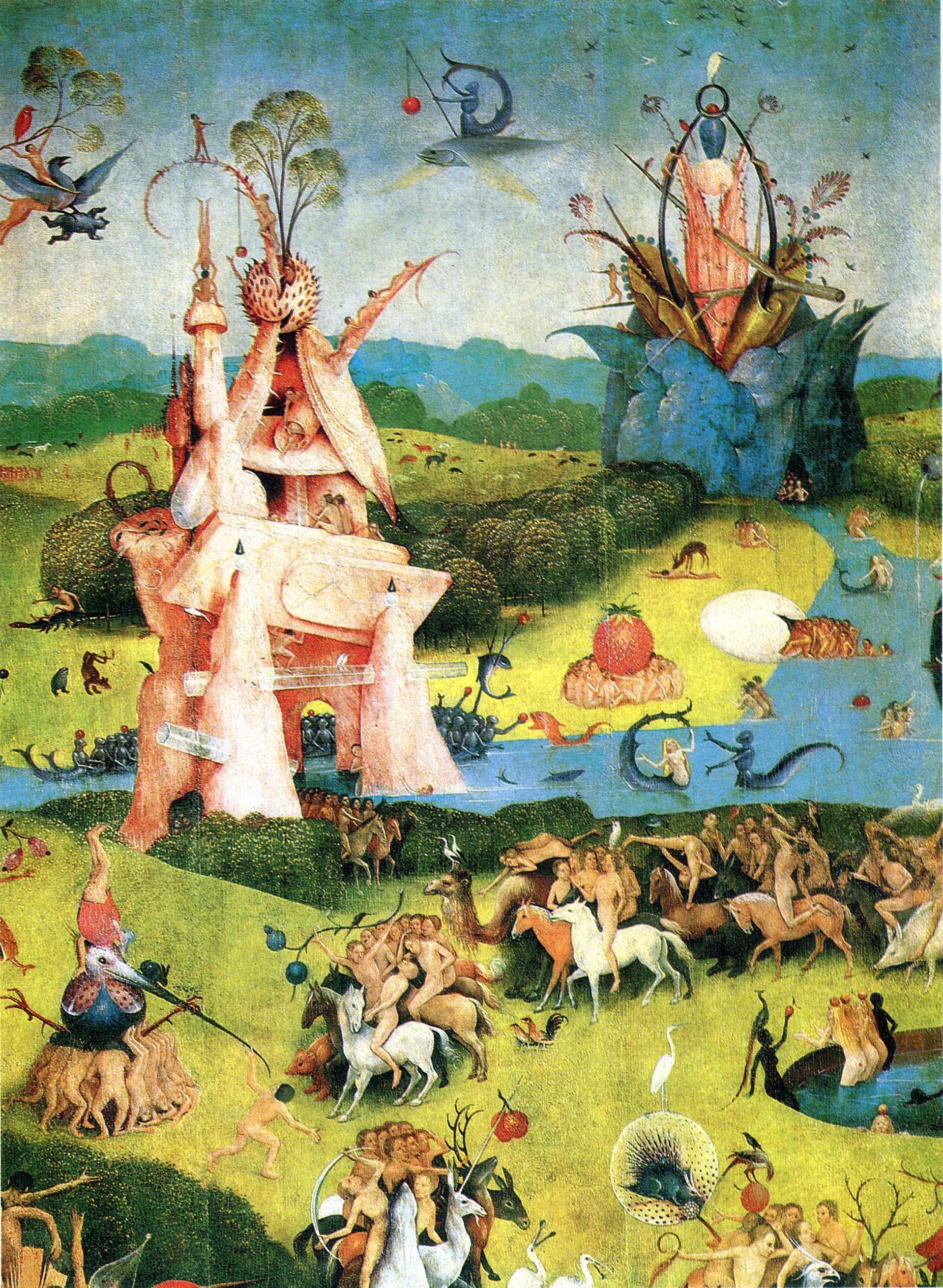
The Garden of Earthly Delights (detail), 1490 1500 Hieronymus Bosch
The Garden of Earthly Delights is the modern title [a] given to a triptych oil painting on oak panel painted by the Early Netherlandish master Hieronymus Bosch, between 1490 and 1510, when Bosch was between 40 and 60 years old. [1] It has been housed in the Museo del Prado in Madrid, Spain since 1939.

The Garden of Earthly Delights Painting by Hieronymus Bosch
Wikipedia Alongside the suffering, there is humour. In the central panel, we see naked people riding oversized birds including a robin, a duck and a woodpecker. Bosch might have been making a.

The Garden of Delights de Hieronymus Bosch Fragmentos Culturais
The Garden of Earthly Delights is one of his most famous paintings. It is a triptych depicting heaven and hell. The painting has been on display at the Prado Museum in Madrid since 1939. Bosch's Influence on 16th Century Painters Mad Meg, Pieter Bruegel The Elder, 1562, via Museum Mayer van den Bergh Get the latest articles delivered to your inbox
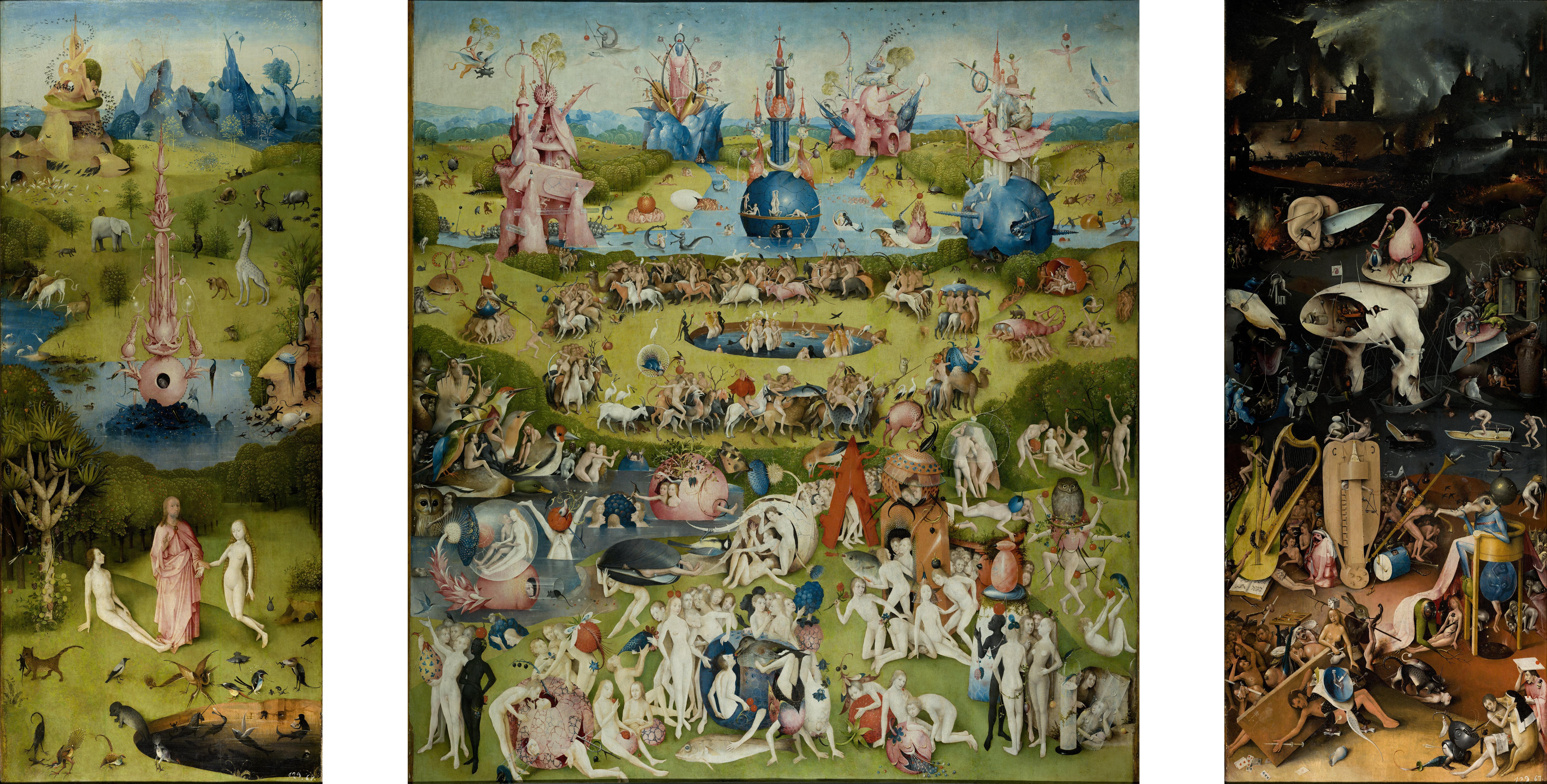
The Garden of Earthly Delights Hieronymus Bosch encyclopedia of visual arts
Hieronymus Bosch, 1503 - 1504. 220 cm 390 cm. The Garden of Earthly Delights is a Northern Renaissance Oil on Panel Painting created by Hieronymus Bosch from 1503 to 1504. It lives at the Museo Nacional Del Prado in Spain. The image is in the Public Domain, and tagged Hell and Paradise.

Hieronymus Bosch’s 'The Garden of Earthly Delights', A Journey from Heaven to Hell and Back
The Garden of Earthly Delights by Jheronimus Bosch an online interactive adventure This interactive documentary is an audio- and video rich online experience for which you need to turn on your sound. Or better still: put on a headset. On a desktop or laptop computer, the website works best when viewed in Google Chrome.

"Garden of Earthly Delights" by Hieronymus Bosch, in the Museo del Prado in Madrid Most Famous
Bosch's most famous and unconventional picture is The Garden of Earthly Delights (c.1500; Prado, Madrid) which, like most of his other ambitious works, is a large, 3-part altarpiece, called a triptych. This painting was probably made for the private enjoyment of a noble family. It is named for the luscious garden in the central panel, which is.